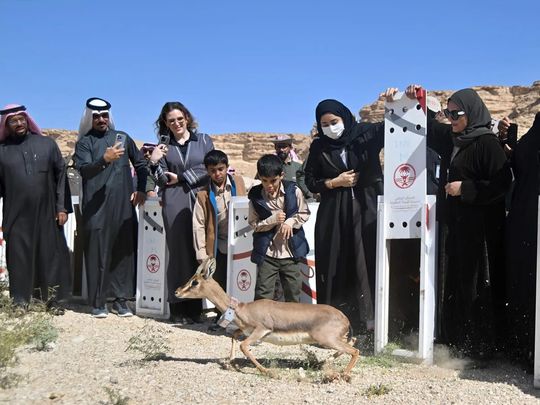
Dubai: The National Centre for Wildlife (NCW) has released 34 wild animals in the Ibex Protected Area, located approximately 180km from Riyadh.
Twenty antelopes and 14 birds were released into the protectorate on January 24. The initiative is part of the centre’s programme to rehabilitate ecosystems, resettle endangered species, and enhance biodiversity in the Kingdom.
The species selected will contribute to the preservation of the environment and support the reserve’s candidacy for inclusion in the Green List of the International Union for Conservation of Nature (IUCN).
The IUCN is a global programme of certification aiming to achieve and promote successful conserved areas by highlighting best practices and providing a benchmark for progress towards equitable management.
Mohammed Qurban, NCW CEO, said that the release of these species reflects the centre’s commitment to sustaining wildlife and preserving ecosystems and their biodiversity.
The effort aligns with the goals of the Saudi Vision 2030 and the national strategy for environmental preservation to create a positive environment and improve the quality of life.
What is Ibex?
Ibex Reserve Protected Area is a nature reserve located in the central region of the Kingdom, south of Riyadh. The reserve is a large, rugged plateau located within the Tuwaiq Mountain range and is interspersed with many valleys and ridges.
Among the most important trees in the reserve are Acacia, Vachellia flava and Sidr. The reserve also includes a group of shrubs and herbs in small valleys and ridges.
The reserve is home to large number of ibex in their innate state, especially the Nubian ibex, and it is also suitable as an area for the resettlement of some wild animals such as deer and antelopes.
There are other animals in the reserve, the most widespread of which are Rock hyrax, wild cats, foxes, wolves, rabbits, jerboas and monitor lizards, in addition to some varieties of snakes, as well as a group of birds of prey and sparrows, in addition to a few numbers of Houbara bustards.


